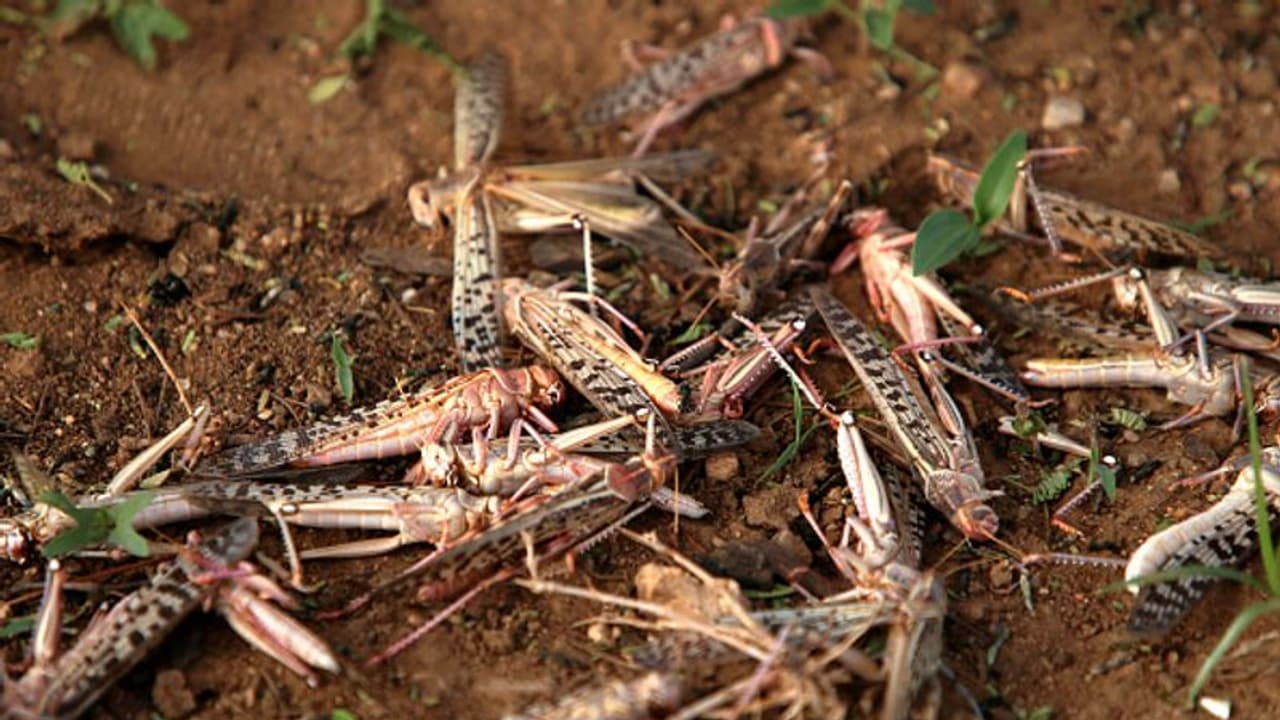The insects, a common threat for India and Pakistan, have for the first time entered areas in the two countries that remained unaffected in previous invasions.
New Delhi: India and Pakistan are facing the worst locust attack in nearly three decades and it is feared that crops worth billions of rupees would be lost. This has led to fears about food security in the two countries. The insects have for the first time entered areas in the two countries that remained unaffected in previous invasions. It has turned out be a common threat for both the neighbouring countries and it has propelled them to come together to fight invasion.

The cooperation is a rare instance of the two arch-rival neighbours working together and it shows that despite the bitterness that affects bilateral ties, both states can work together to tackle common threats. These include pollution — the toxic smog that chokes Lahore and New Delhi knows no boundaries but can be tackled together. Moreover, the Covid-19 pandemic continues its deadly march across the planet, and a regional approach can help both states combat the contagion very effectively. But this is not to say that differences between the countries will disappear overnight.
While thorny issues need steady efforts and diplomacy to resolve, other problems can be dealt with in a less complicated manner. SAARC can be reactivated to approach the relatively ‘soft’ issues that afflict South Asia, such as climate change, food security, health, etc. It is hoped a regional strategy is chalked out to deal with the locust issue, considering the threat it poses to food security. Once progress is achieved on these fronts, perhaps both states will one day have the confidence to approach the more difficult questions that have bedevilled South Asia for over seven decades.
Despite high running tensions between Pakistan and India, the two nations are cooperating with each other to fight desert locust invasion under a forum administered by the Food and Agriculture Organisation (FAO). Pakistan is part of FAO’s Commission for Controlling the Desert Locust in South-West Asia (SWAC), which is one of the oldest of the three regional commissions within the global locust early warning and prevention system. Other members of the regional commission include India, Iran and Afghanistan.
Weekly virtual meeting on Desert Locust of South-West Asian countries (Afghanistan, India, Iran and Pakistan) is being organised by FAO. 15 virtual meetings of the technical officers of South West Asian countries have taken place so far.
Indian states of Rajasthan, Madhya Pradesh, Punjab, Gujarat, Uttar Pradesh, Maharashtra, Chhatisgarh, Haryana and Bihar were also affected by locust attack. Control operations have been done in 1,43,422 hectares area during last 25 days against small groups and scattered population of locusts. Aerial spraying capacity has been strengthened. A Bell helicopter has been deployed in Rajasthan for use in Scheduled Desert Area as per the need. Indian Air Force also has conducted trials in anti-locust operation by using an Mi-17 helicopter.
IAF started participating in anti-locust operations from 5th July by deploying the Mi-17 helicopter for aerial spraying in Jodhpur district. This is first of its kind event in the history of locust control in India. Further, 5 companies with 15 drones are deployed in Rajasthan for effective control of locusts on tall trees and in inaccessible areas through spraying of pesticides. India is the first country that is using drones for locust control.
Pakistan is facing its worst locust infestation in more than 25 years. Desert locusts descended on Karachi in November for the first time in nearly 48 years. The crop-eating grasshopper, which entered Pakistan in June last year, attacked Iran and then spread to some Indian states along Cholistan - has already struck a large area of the country, especially its south-western districts, in recent months, ravaging cotton and food crops. According to media reports, for Pakistan, where 38pc of the area (60pc in Balochistan, 25pc in Sindh and 15pc in Punjab) have been breeding grounds for the swarms, the situation turned dire as struggling farmers from different parts of the country reported severe crop damage.
Pakistan’s Foreign Office spokesperson Aisha Farooqui has said that Pakistan has been participating in SWAC meetings on a weekly basis. She described the cooperation as “fruitful” in exchanging information in the bordering areas of Pakistan and India. “We believe that the respective Technical Teams have been coordinating appropriately through FAO,” she further said.
Pak Prime Minister Imran Khan has said that the government will undertake every possible effort for locust control since it involves food security of the country. Locust attack combined with COVID-19 is a huge challenge for Pakistan. He emphasized that a coordinated national response of federal and provincial governments and organisations is required to cope with the expected locust swarm so that crop production is not affected.
The outbreak is blamed in part on climate change. If lower temperatures continue and the weather remains wet for a longer time, it will spread even further as a swarm leaves its breeding ground on the Pakistan-India border along Cholistan. As per the United Nations’ Food and Agriculture Organization’s latest Locust status update, many of the spring-bred swarms that migrated to Indo-Pak border before the monsoon rains, some continued east to northern states of India and a few groups reached Nepal.
The forecast is that these swarms will return to Rajasthan with the start of the monsoon in the coming days to join other swarms still arriving from Iran and Pakistan, which is expected to be supplemented by swarms from the Horn of Africa in about mid-July. Early breeding has already occurred along the Indo-Pak border where substantial hatching and band formation will take place this month that will cause the first-generation summer swarms to form in mid-August.
